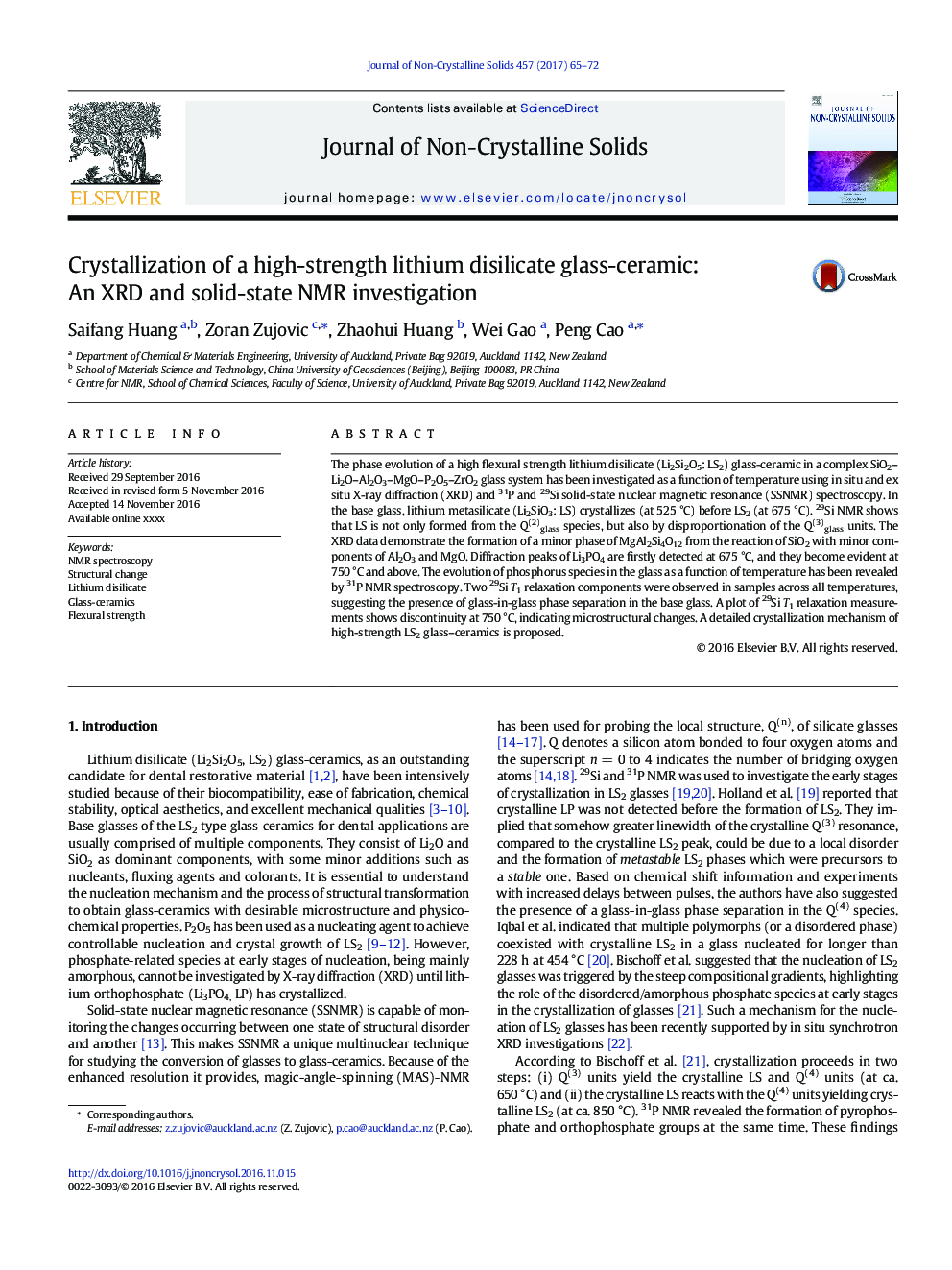| Article ID | Journal | Published Year | Pages | File Type |
|---|---|---|---|---|
| 5441520 | Journal of Non-Crystalline Solids | 2017 | 8 Pages |
Abstract
The phase evolution of a high flexural strength lithium disilicate (Li2Si2O5: LS2) glass-ceramic in a complex SiO2-Li2O-Al2O3-MgO-P2O5-ZrO2 glass system has been investigated as a function of temperature using in situ and ex situ X-ray diffraction (XRD) and 31P and 29Si solid-state nuclear magnetic resonance (SSNMR) spectroscopy. In the base glass, lithium metasilicate (Li2SiO3: LS) crystallizes (at 525 °C) before LS2 (at 675 °C). 29Si NMR shows that LS is not only formed from the Q(2)glass species, but also by disproportionation of the Q(3)glass units. The XRD data demonstrate the formation of a minor phase of MgAl2Si4O12 from the reaction of SiO2 with minor components of Al2O3 and MgO. Diffraction peaks of Li3PO4 are firstly detected at 675 °C, and they become evident at 750 °C and above. The evolution of phosphorus species in the glass as a function of temperature has been revealed by 31P NMR spectroscopy. Two 29Si T1 relaxation components were observed in samples across all temperatures, suggesting the presence of glass-in-glass phase separation in the base glass. A plot of 29Si T1 relaxation measurements shows discontinuity at 750 °C, indicating microstructural changes. A detailed crystallization mechanism of high-strength LS2 glass-ceramics is proposed.
Related Topics
Physical Sciences and Engineering
Materials Science
Ceramics and Composites
Authors
Saifang Huang, Zoran Zujovic, Zhaohui Huang, Wei Gao, Peng Cao,
